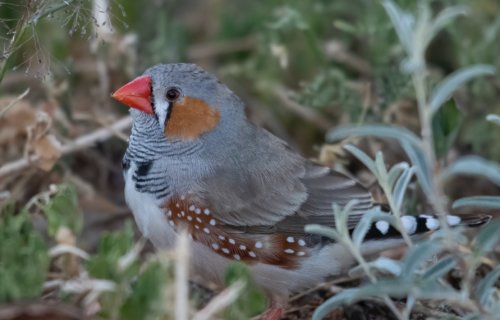PORTLAND, Ore. — Bird songs aren’t just a pleasant sound, they may also hold the key to understanding how our own motor skills work, a new study reveals. For scientists, this could mean unlocking the brain functions that play a role in small issues like speech impediments — or larger issues such as the development of motor neuron disease.
A team from Oregon Health & Science University says our feathered friends use specialized cells within the brain to pick up songs. They are similar to those in the cortex of the human brain which control fine motor skills. These neurons shed fresh light on the mechanisms involved when those connections go awry.
Mutations that affect them can lead to stuttering, or serious diseases like amyotrophic lateral sclerosis (ALS). After centuries of misunderstanding the causes as to why people stutter, the new research may finally tie the disorder to certain genes and brainwaves.
Speech is one of the most complicated fine motor skills humans have. Muscles in the jaw, lips, and tongue have to perform rapid and precise movements to produce words with appropriate clarity.
The split-second reactions birds and humans share
Now, study authors have identified the cells within neural circuitry that trigger complex learning among songbirds. They generate electrical signals between cells in the nervous system at extremely high speeds and frequencies as the bird sings.
The study describes “ultrafast spikes” that only last 0.2 milliseconds. Others take at least five times longer. A millisecond is a thousandth of a second. They also bear a striking resemblance to a type associated with the development of fine motor skills in humans.
“These are the properties you need if you want to have a male song that’s precise and distinct so the female can choose which bird she wants to mate with,” says co-senior author Dr. Henrique von Gersdorff in a university release. “You need a highly specialized brain to produce this.”
The team found the assemblage involved in the male zebra finch’s singing closely resembles neurons known as Betz cells in the human brain. They have long, thick nerve fibers called axons that propagate spikes at very high velocities and frequencies – important for hands, feet, finger, and wrist dexterity.
“Think of a piano player. They’re thinking so fast, they have to rely on memories and actions that are learned and stored. Playing the guitar is the same thing,” adds co-senior author Professor Claudio Mello.
Uncovering the evolution of motor skills
The serendipitous discovery was made after Dr. von Gersdorff showed Prof. Mello a brain image of a young male zebra finch at an age just before the bird could sing. Another revealed a telltale sub-unit of proteins that had materialized after the bird was old enough to begin singing.
“Something remarkable was happening in a period of just a few days,” Dr. von Gersdorff says. “I said, this is exactly the protein we’ve been studying in the rodent auditory system. It promotes high frequency spiking.”
The study, published in the journal Nature Communications, deepens scientific understanding of the learning of fine motor skills.
“This is a very important model, and we think this new study has broad potential,” Prof. Mello concludes.
The motor circuit properties are shared by species that diverged more than 300 million years ago. Neuronal properties in the male zebra finch may become optimized for speed and precision through convergent evolution. The phenomenon is the process by which two unrelated species evolve similar features to adapt to problems or habitats.
South West News Service writer Mark Waghorn contributed to this report.
